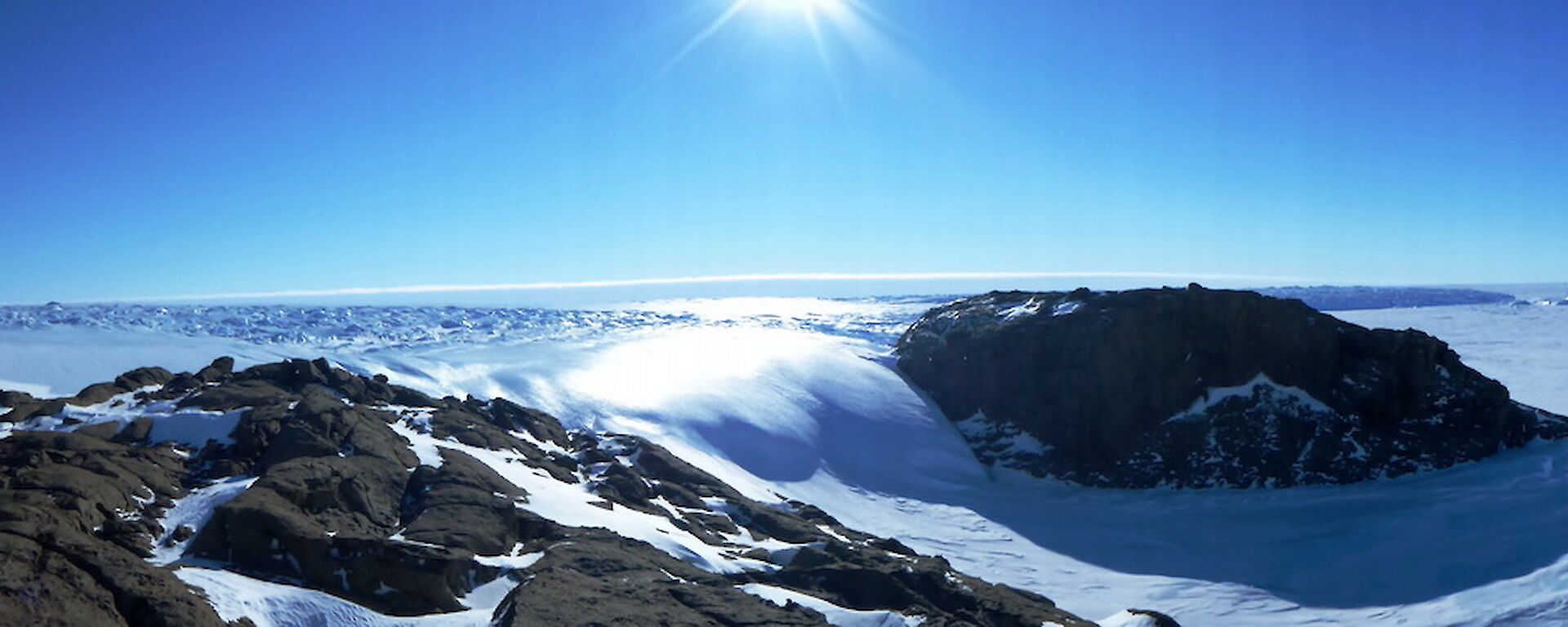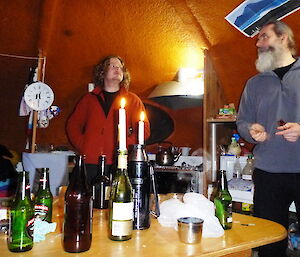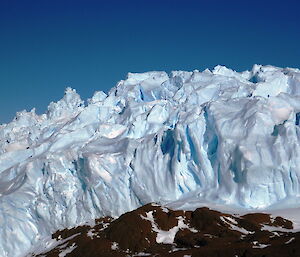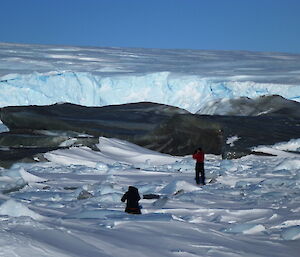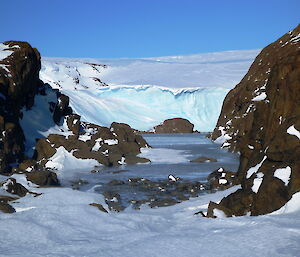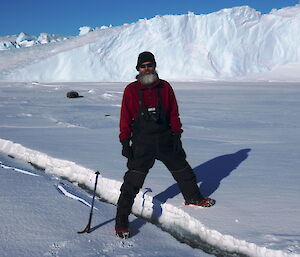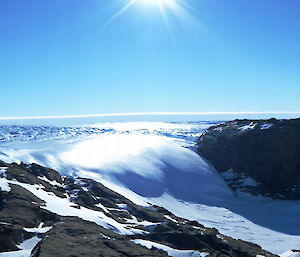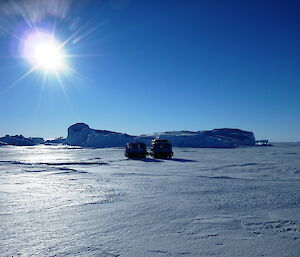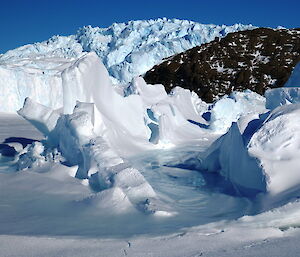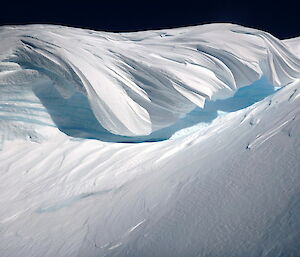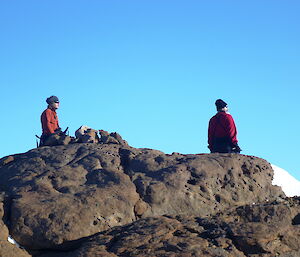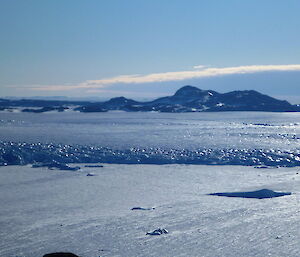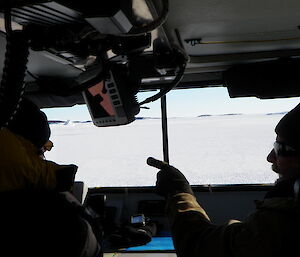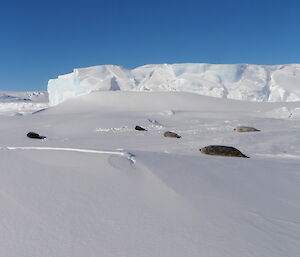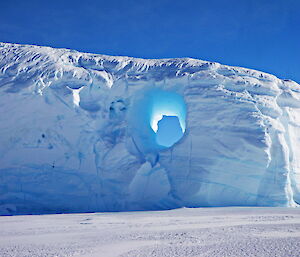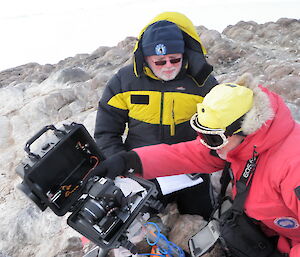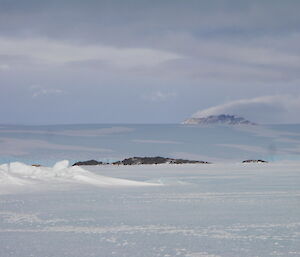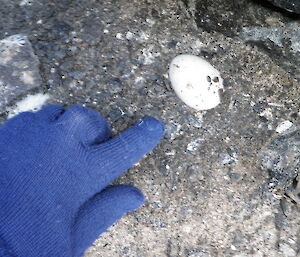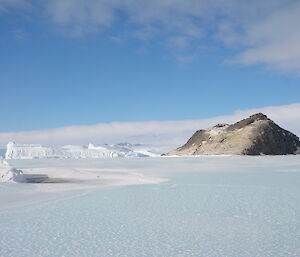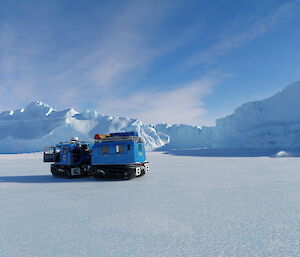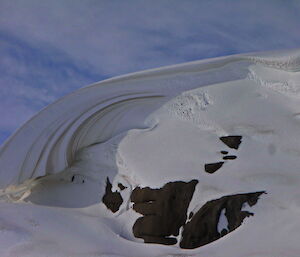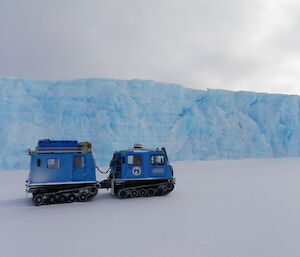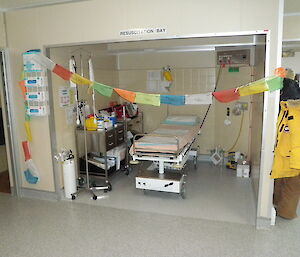This week at Mawson: 4 October 2013
Stibbs Bay and the Stanton Islands
Darron, Keldyn and myself (Peter C) prepared ourselves for an overnight stay at Bechervaise Island and then a day exploring the Stanton Island group and into the Stibbs Bay area as far west to the Jelbart Glacier, approximately 50km as the crow flies from Mawson Station.
We set off after dinner on Thursday with equipment and supplies packed. We also decided to take along a guitar and bongo drums for a bit of extra excitement for the night at Bechervaise Hut.
Once we settled in at the hut, played some tunes for a while we finished the night off with a few games of round the board (darts) before hitting the sack some time after midnight.
The next day we woke to clear skies and light winds and it promised to be perfect weather for exploring. We packed our gear and set off due west across Holme Bay, past the Forbes Glacier, past Low Tongue area, through the Stanton Group, into Stibbs Bay right to the very edge of the Jelbart Glacier of course stopping along the way to take photos and look around.
The day had warmed up with no wind and was the first day I had spent without all the usual cumbersome clothing, it did feel like a real treat with a chance of getting sun burnt also. We spent a good couple of hours in this area climbing to higher ground so as to take in more of the scenery and to glimpse further along the coast across the Jelbart Glacier down towards the Colbeck region.
After a quick bite to eat we headed back east hugging the coast towards the Stanton Group where we stopped for some more exploring around the Falla Bluff area. Falla Bluff is a prominent rocky coastal bluff at the head of Stibbs Bay that pokes out above the ice at 290m above sea level. We left the sea ice and made our way onto the shore and after a short walk found a nice little frozen lake tucked in against the glacier with some nice overhanging snow. We then slowly made the climb to the top of Falla Bluff where we rested enjoying the view and the great weather.
The summit was marked with a cairn which had a plastic capsule within containing the names of previous visitors. We would have added our names but for the lack of a writing implement. Blood was mentioned but without a willing volunteer we decided to leave it for next time.
All good things must come to an end, and the day was getting on so we made our way to the Hagg and headed back to station with the promise of pizza for tea.
We would need another day or two to explore more of this area in the near future.
Peter Cubit
Landing areas, seals and cameras.
This weeks’ activities have brought home to all of us the reality of how quickly the year has gone, and how soon we will be receiving our summer visitors. In less than one month, we should be seeing our first aircraft flights of summer land on the sea-ice as new faces fly in to Mawson, and a few old faces fly out to join the Aurora Australis at Davis to sail home. Time was spent on a warm Spring day this week surveying the local sea-ice for a safe landing runway for this first flight.
An incidental discovery while out looking for ice-landing strips was the sighting of the first sizable group of 14 Weddell seals that have arrived in the area to look for a safe haven to deliver their pups.
Near to the station and close by the Weddell Seal crèche is a large iceberg which has an enormous hole through its middle. This hole is 20 metres in diameter and is a good illustration of what may be underfoot whenever one travels on the ice plateau.
Another activity undertaken this week was the cleaning and refurbishment of nine Adelie penguin surveillance cameras which are established on various islands in the Mawson area. The function of each of these cameras was checked for its operational efficiency and its cleanliness, in readiness for the arrival of the Adelie penguins in the next few weeks.
Whilst out on the sea-ice checking the penguin cameras, there were a few extra discoveries which really added to the enjoyment of the day. High winds on the plateau led to the formation of a huge rotor cloud streaming from the peaks of the Casey Range and running several kilometres westward.
A frozen egg found in a Snow Petrel breeding area was almost as large as a chook egg. How did such a little bird manage to lay such an enormous egg?
We passed Rookery Island and noted that it was a perfect site for Adelie Penguins to nest. It faced the summer northern sun, and it was evenly sloped and tiered to accommodate many penguins, each with a view towards the sea.
On our way home, we found ourselves surrounded by a large group of icebergs, all beautifully lit by the sun.
When we arrived at Verner Island, a huge cornice of snow was found on the northward side, delicately streaked with dirt, giving a layered appearance like a frozen dessert.
On our way home at the end of the day, a small glacier, not far from Mawson Station, presented itself with many layers of delicately shaded blue ice.
On arrival back at Mawson, I found many rooms of my surgery decorated with Nepalese prayer flags. I’m not sure if there was a hidden message in the assembly of these prayer flags.

